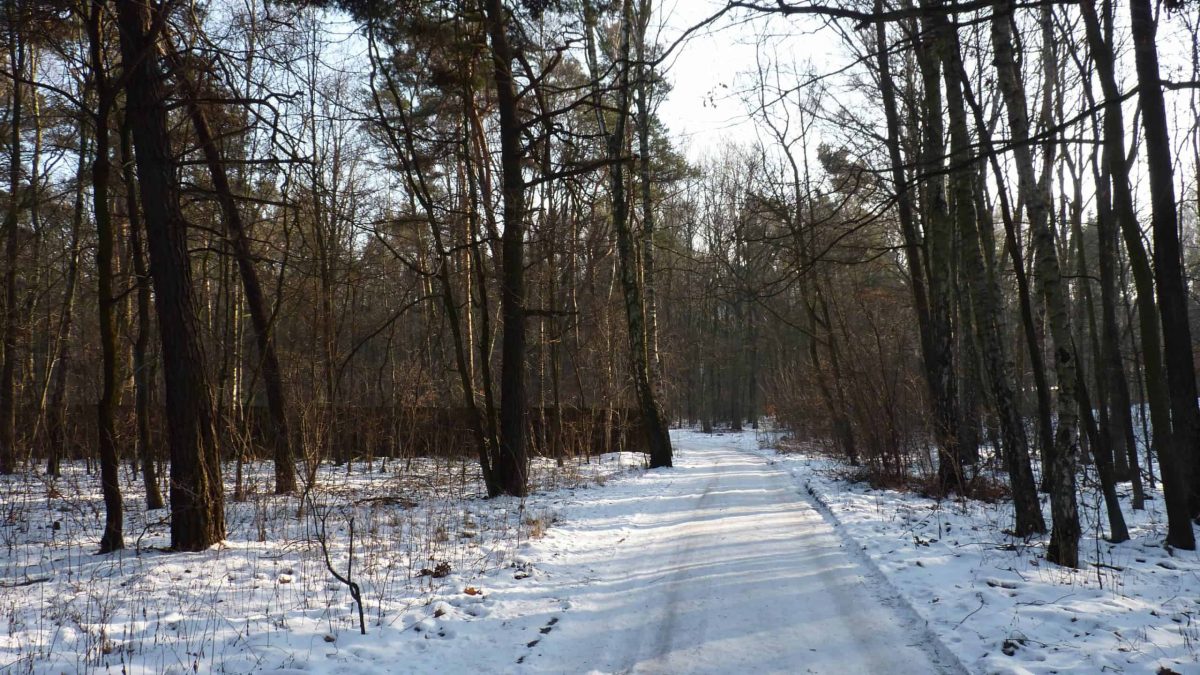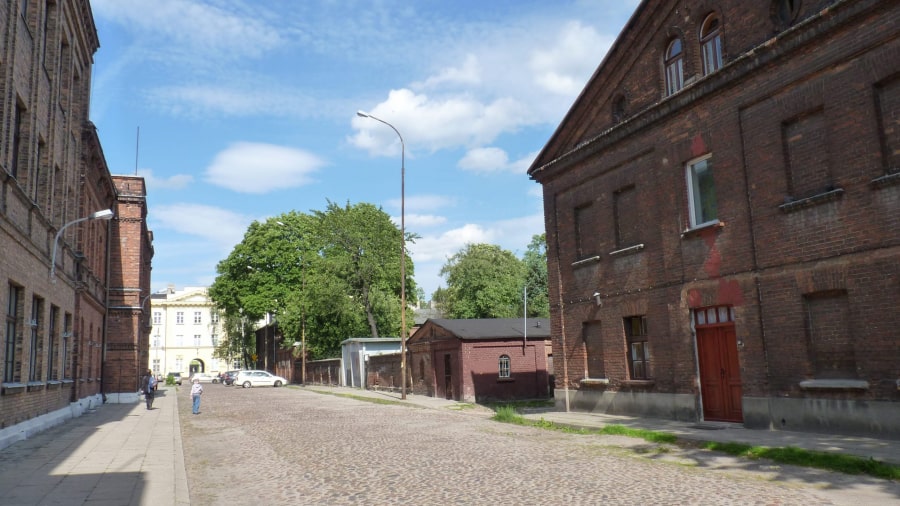I provided snippets of my experience living and working in Łódź when I reviewed David Jackson’s book, Classrooms and Barrooms.
Anyhow, let’s dive in to see what living and working in Lodz was like for me in a little more detail.
Living and working in Łódź: This virtuous employee expected a little better
I’m going to start off on a slightly negative note. However, don’t let these stories about my accommodation and my boss put you off the former industrial centre of Łódź.
At Christmas time, 2011, I was in contact with the owner of an education company in Łódź. I had applied for a position to teach Business English from the start of 2012. Frankly, I was itching to get back into teaching English after three months away from the classroom. In autumn, 2011, I was in Bath, UK, to do the Cert IBET – a specialist qualification for Business English trainers.
I rocked up in Łódź to turn over a new leaf. I had a strong desire to banish my peevish tendencies. However, I think I was right to be furious about the accommodation my bosses had found for me. It was a 20 m2 hole on one of the main roads in Łódź.
My boss lumbered one of his partners with the job of showing me the flat. Standing there in that 70cm-wide kitchen, it took me ten seconds to say: “I ain’t’ staying here.” I guess that the owner’s flagrant disregard for my welfare that night said a lot about the man. All he did was pass the buck to his colleague (pet).
All in all, I learned a great deal from this housing-related experience.
Jana Kilińskiego – A long street named after a hero
My search for a new paradise took me further east into the Śródmieście district.
I was eyeing up a room in a flat on Jana Kilińskiego Street. For your information, Jana Kilińskiego Street is named after shoemaker Jan Kiliński. In the 1794 Warsaw Uprising, Kiliński led a National Militia comprising several thousand volunteers. Their aim was to throw off Russian control of the Polish capital.
The area was replete with imposing and ugly tenement houses. There was a raw and heavy working-class whiff to the area. I didn’t mind. At least there wouldn’t be 10,000 cars a minute streaming past my window. I could tolerate a few cars but not a dual-carriageway.
Just around the corner from what was to become my new place of living, one can find Włókiennicza Street. It’s saying something that the buildings on Włókiennicza were incongruous with all the other neglected tenement houses in the area. Honestly, the tenement houses on Włókiennicza were just terrifying to look at. Things have changed in recent years with Włókiennicza Street being one of the main focuses of the regeneration programme in the city centre of Łódź.
When I originally wrote this article, I googled, in Polish, “the worst areas in Łódź.” Unsurprisingly, Włókiennicza claimed second place in this article. Check out the article’s assessment of Włókiennicza:
“Włókiennicza Street – the notoriety of this street is timeless. The old inhabitants of Łódź say that even the Germans preferred not to go there during the occupation … It is worth noting that Włókiennicza very often plays the role of a wartime street due to its deplorable condition.”
Of course, the ghetto around the corner didn’t worry me at all. After all, I expected to find some peace and quiet in my new flat – didn’t I?
So better luck on Jana Kilińskiego Street then?
I rented the biggest room out of three in this flat on Kilińskiego. My two housemates were students. Pleasingly, I hit it off straight away with the law student. Alas, the other “kid” was too wrapped up in his computer games for me to even find out what he was studying. Perhaps he’s still zapping zombies in the same room.
So, all was well – until night-time came. I was accompanied by the sound of dripping water in the radiator in my room. I tried to work some magic with the valves, but to no avail. The sound seemed to be getting louder and louder as the days passed.
Ever the optimist, I believed that my smug landlords would solve the problem. Given that I was overpaying for my room by about 250 PLN per month, I expected them to at least approach the radiator. To my surprise, my landlords had a charmingly reductive explanation for the situation: “That’s life!” Predictably, our irreconcilable opinions of the situation with the radiator led the perturbed tenant to make a snap decision. Leave.
It was early January and the heating was bound to be on for at least another three months. Hence, I began to look for a room I could actually fall asleep in. As soon as I found a new place on Kpt. Franciszka Żwirki Street, I made a smooth getaway from the “dripping radiator” place. In fact, extremely smooth – I remembered to take the owners’ ironing board with me as a souvenir. My lawyer housemate told me that Gertruda and Lech, or whatever the owners were called, were dithering over whether to call the police. That would have been just as preposterous as me whining to the police about the dripping noise inside the radiator.
All in all, I just didn’t fancy arguing with Leech and Bermuda. Perhaps my reluctance to have a good old barney with them was just my phlegmatic British character shining through.
Some wintry snaps from the “dripping radiator” place


More Street name history – Kpt. Franciszka Żwirki Street
Evidently luckless in the northern part of the Śródmieście district, I moved to the southern part.
My new street was called Kpt. Franciszka Żwirki. It was on one of the main tram lines in Łódź. Interestingly, the sound of trams running by my flat every few minutes or so didn’t bother me one jot. They woke me up early every morning for the first few weeks. After that, I slept like a log despite the continuous rumbling noises.
So, Kpt. Franciszka Żwirki Street it was. Franciszek Żwirko was an esteemed Polish sport and military aviator at the start of the twentieth century. In many Polish cities, you may notice that it’s not Żwirki Street but “Żwirki i Wigury”. Stanisław Wigura was also an aviation enthusiast. Żwirko and Wigura flew together and took part in many plane contests. Sadly, the pair died in 1932 when they crashed in their RWD-6 whilst flying to an air event in Prague.
Early days in Łódź
That’s enough of flats and street names. Let’s take in some of my early impressions of Łódź.
If you have the right mindset, living and working in Łódź should be a very pleasant experience.
Łódź never felt like an unbearably huge thriving metropolis to me. That’s the way I like it. Big, but not endless in all directions.
In my first month in Łódź, I didn’t have a whole lot of time for sightseeing. My work schedule grew by the day. Moreover, I was studying part-time throughout January and February. Nevertheless, I took plenty of strolls around the northern Śródmieście district and the Stare Miasto neighbourhood.
No day out in Łódź is complete without a walk down Piotrkowska Street. Piotrkowska is one of the longest commercial thoroughfares in Europe. I always thought that it had a bit of the “death of the British High Street” feel about it. Despite the customerless shops, there’s still plenty to do and see in and around Piotrkowska.
At the northern end of Piotrkowska lies Plac Wolności (Freedom Square). Plac Wolności was originally called Rynek Nowe Miasto (New Town Square). The Square took this name so as to distinguish it from Łódź’s original market square – Stary Rynek – which lies some 450 metres to the north.
In and around Manufaktura
I often ambled around Plac Wolności, and would then walk north along Nowomiejska Street to Staromiejski Park.
One of my earliest memories of Staromiejski Park is of watching a group of people play Pétanque. Petanka, as the Poles refer to it, consists of throwing metal balls (boules) from a marked circle towards a small wooden or plastic ball. The game is played on a grass-free square, such as on paved gravel.
Standing there that day, I did wonder how this traditional French game came to appear in Łódź. It wasn’t just a pastime peculiar to Łódź. In fact, there are over 35 clubs all around Poland in the Polish Petanque Federation.
Just opposite Staromiejski Park on its west side is Izrael Poznański’s Palace. In a nutshell, Izrael Poznański was a Polish-Jewish businessman, textile magnate and philanthropist in Łódź at the end of the nineteenth century. Since 1975, part of the residence of the Poznański Family has been the seat of the Museum of the City of Łódź.
The Museum of the City of Łódź website describes the palace as “the most easily recognisable building and showcase of the city”. I couldn’t argue with this claim as I never saw anything quite like it in my time in Łódź. My only regret is not visiting the museum when I was there. Nevertheless, I plan to atone for my sins when I visit Łódź next time. Finally, Poznański’s Palace recently underwent a thorough renovation so it’ll be interesting to see the original colours of the façade restored.
The locals wax lyrical about Manufaktura
After walking in Staromiejski Park and admiring Poznański’s Palace, I would invariably wind up at Manufaktura.
Manufaktura is an arts centre, shopping mall, and leisure complex. The center was established on the grounds of Poznański’s complex of mills.
Courtesy of the restoration of 90,000 m2 of red brick buildings, the old urban/industrial atmosphere of the former factory complex remains.
The locals wax lyrical about their Manufaktura. After all, it’s the chief hangout for Łódź residents. Moreover, “Manu” is heaven for gourmets due to the sheer variety of cuisine on offer.
Getting to know Łódź better
So, the tram stop was just in front of my building. The tram would whisk me up to school in around eight minutes. I also used the tram to travel to a few students in Łódź. Indeed, I distinctly remember my 35-minute tram ride to Chochoła Street to teach Włodek and Halina, a rather charming retired couple.
Chochoła Street is in the far northwestern corner of Łódź. Frankly, I didn’t grumble about this 35-minute journey because it was refreshing to get out of the Śródmieście and Fabryczna districts which I was otherwise stuck in from Monday to Friday. Besides, Włodek usually gave me a lift back home. My boss confessed that Włodek never offered him a ride home when he took the tram to Chochoła to teach the couple. Well, I had a little internal chuckle after this revelation.
The highlight of my week was a trip to Łagiewnicki Forest. The tram would take me from my building up to the tram stop Marysin Skrzydlata, just a few kilometres south of Łagiewnicki Forest. After being stuck in front of my computer for the best part of the week, there was no better way for me to unwind than to run and walk through the forest.
Łagiewnicki Forest is one of the largest city forests in Europe. The most precious part of the forest is a protected nature reserve. There is also the Bzura river, which begins its flow at the southern end of Łagiewnicki. The river forms three water bodies near where I used to enter the forest from Skrzydlata Street. This area, known as Arturówek, is a fabulous recreational and leisure base with a kayaking and rowing harbour.


Conclusion – Plenty more sightseeing to do in Łódź
All in all, living and working in Łódź left me with little to complain about.
Contrary to the stereotypes of TEFL teachers, I decided not to lead a hedonistic existence of booze and unfastidious lesson planning. I was quite the meticulous one. My routine was stable, my students were great and I had my public transport pass to zip around Łódź and up to Łagiewnicki Forest. Occasionally, I’d meet up with some very savvy colleagues to talk shop and groan about Arsenal’s pitiful form.
Finally, I regret not visiting some very important places of interest in Łódź. These sights include the Jewish Cemetery, The Łódź Ghetto Museum and the Museum of the City of Łódź in Poznański’s Palace.
The upshot of my nostalgic reflections and yearning for Łódź in this post is that the city’s historical sights and museums shall receive my undivided attention the next time I visit.

